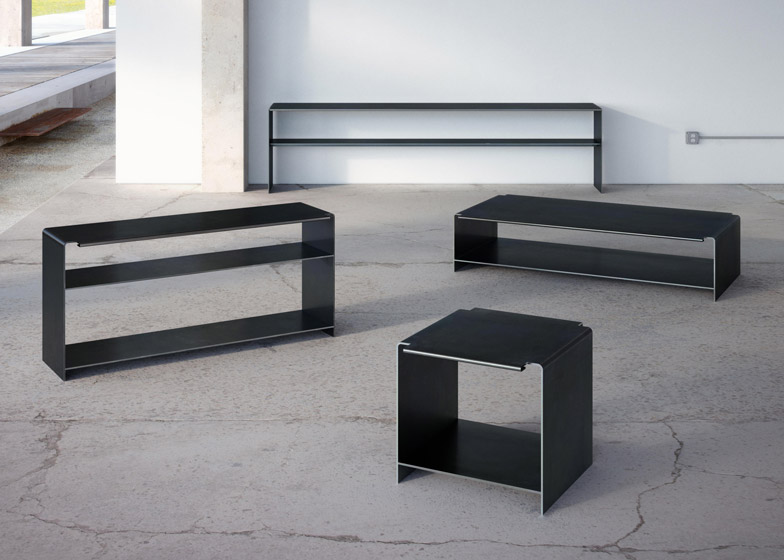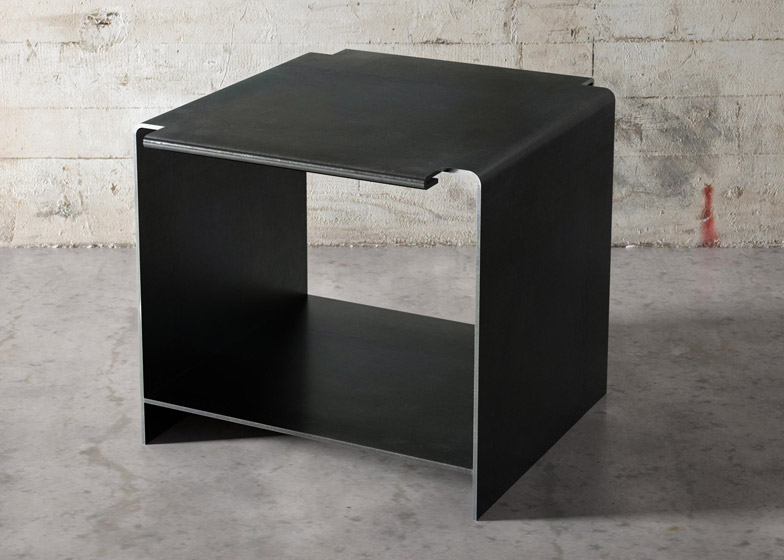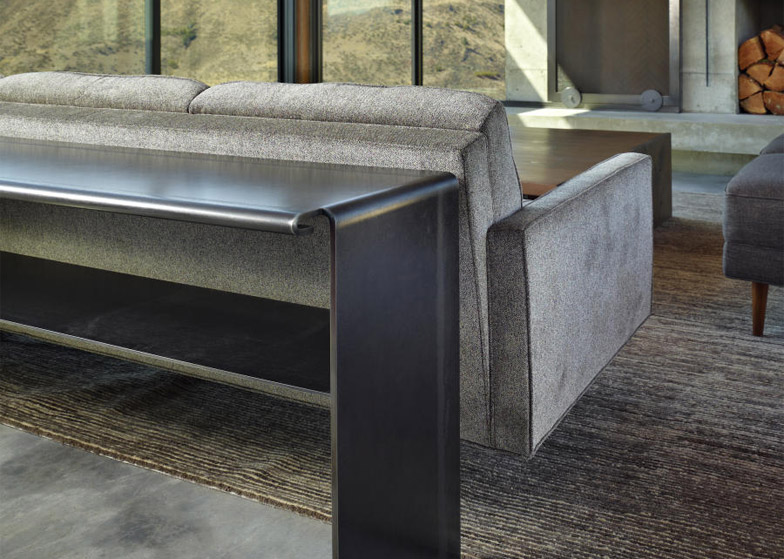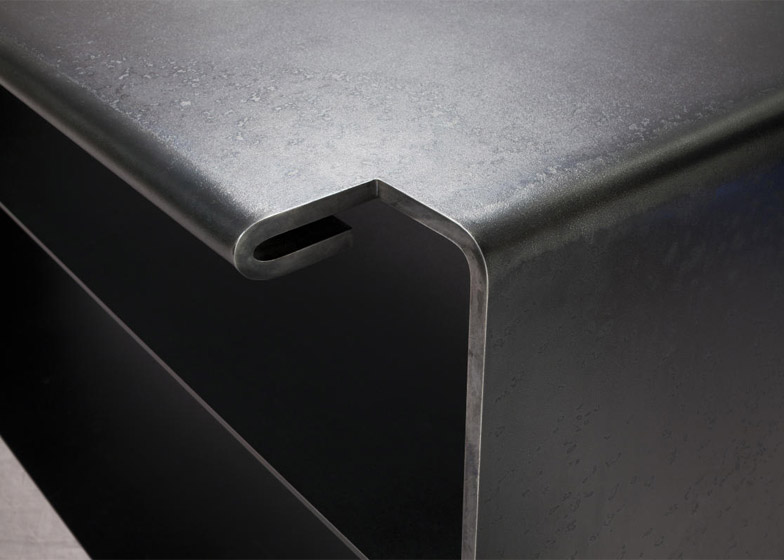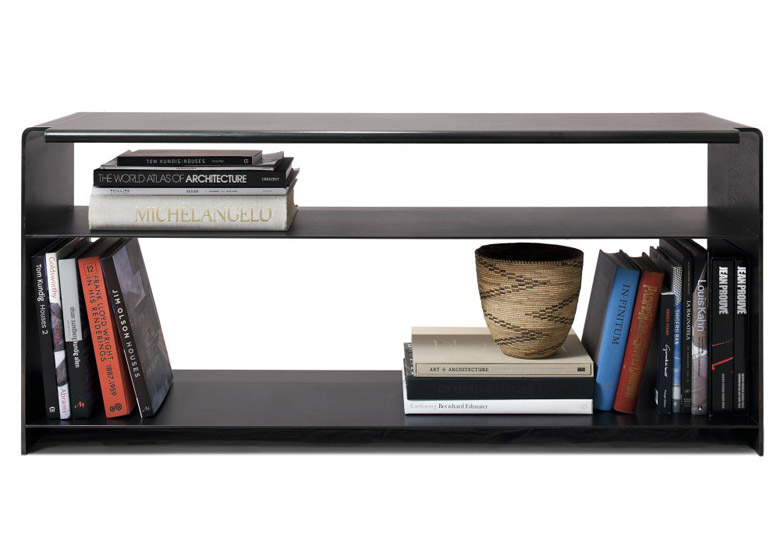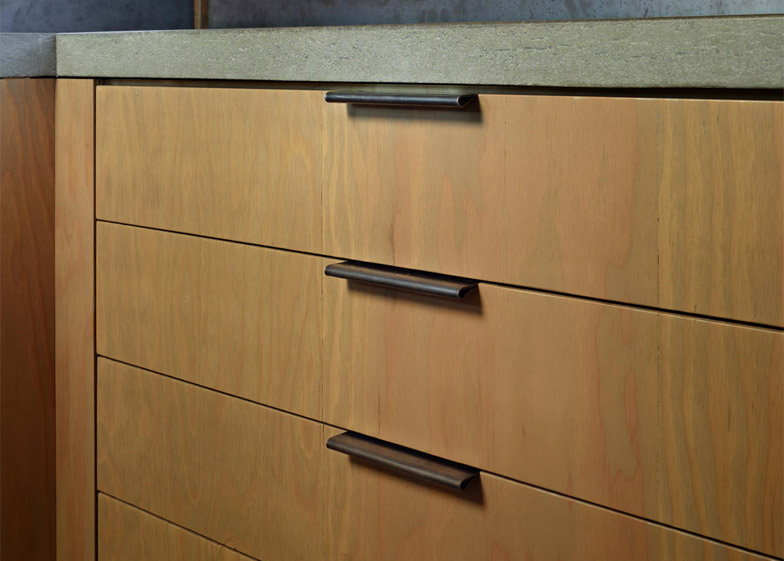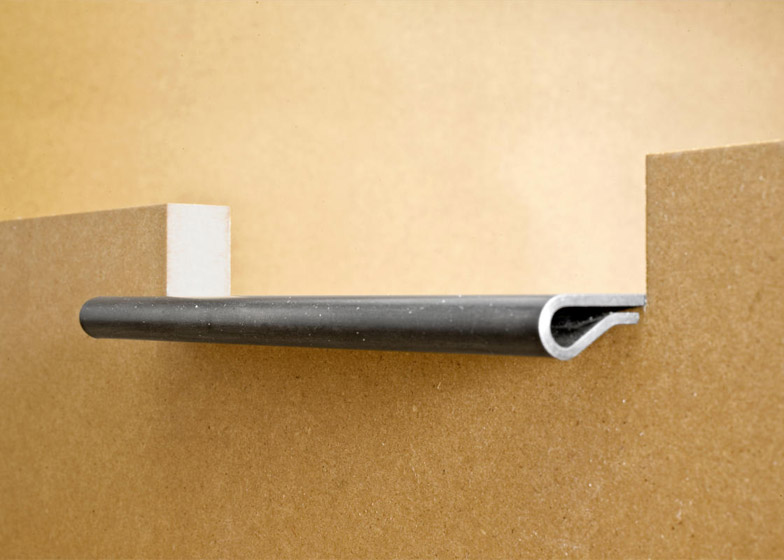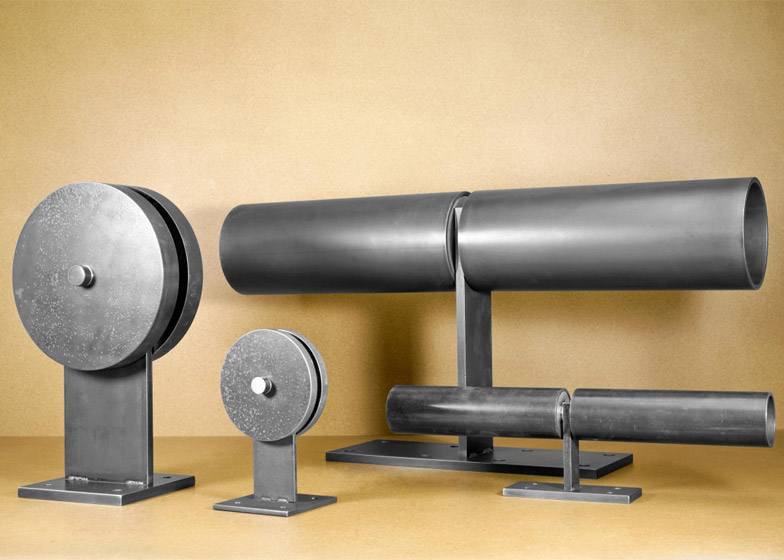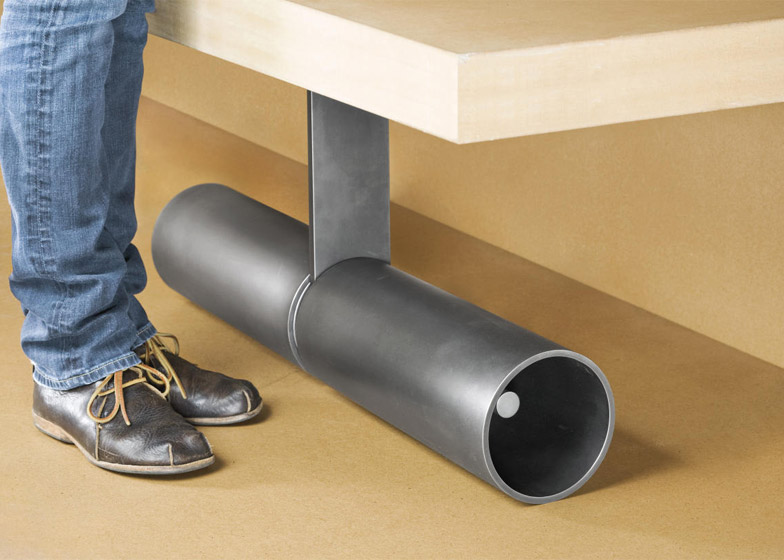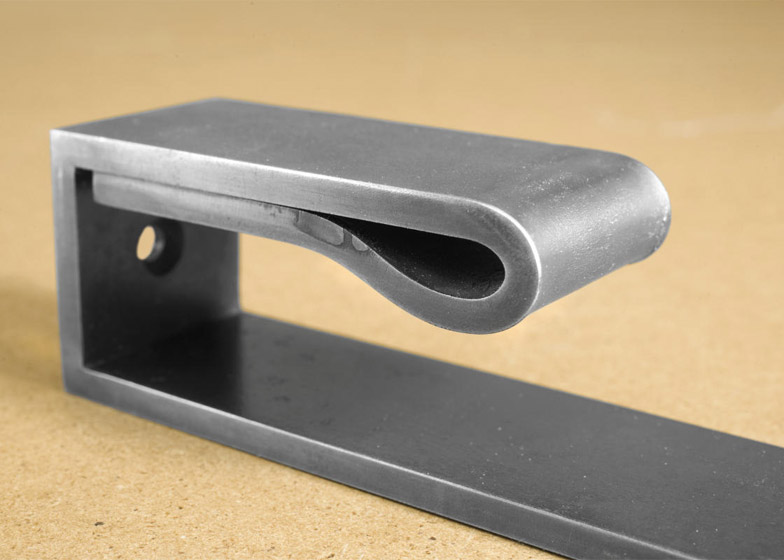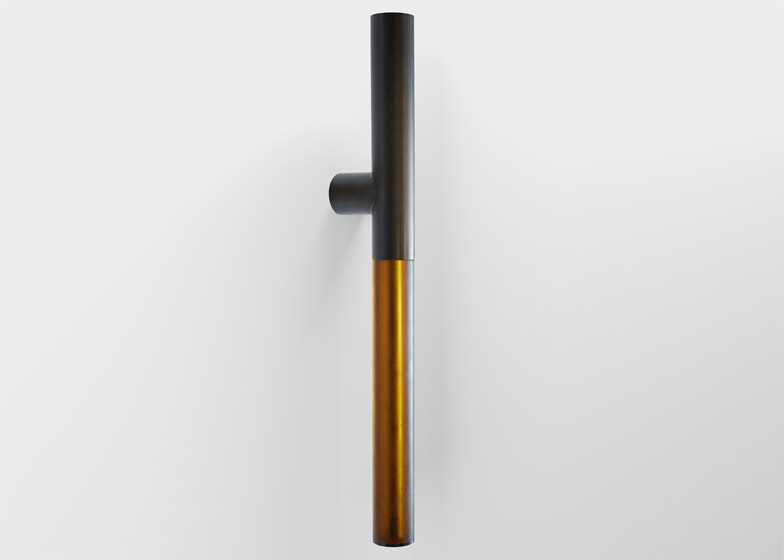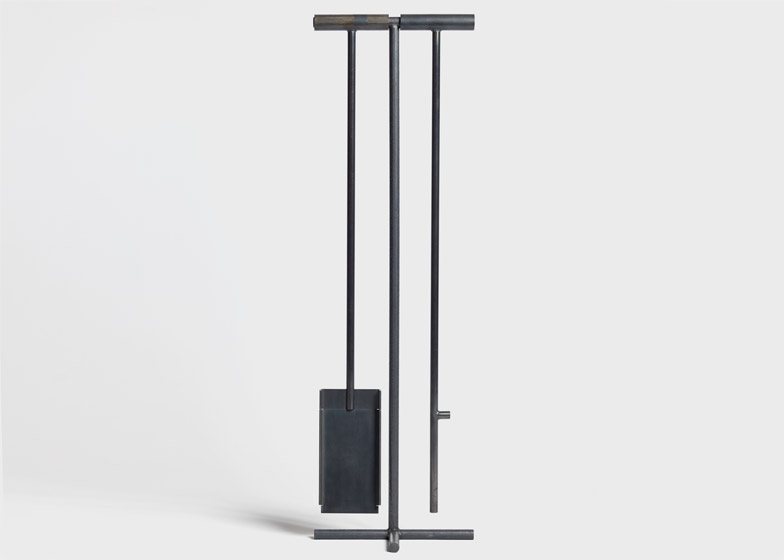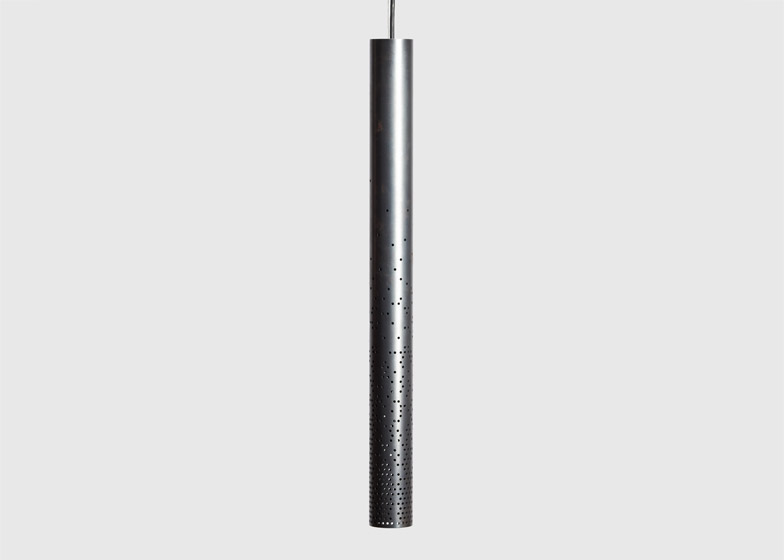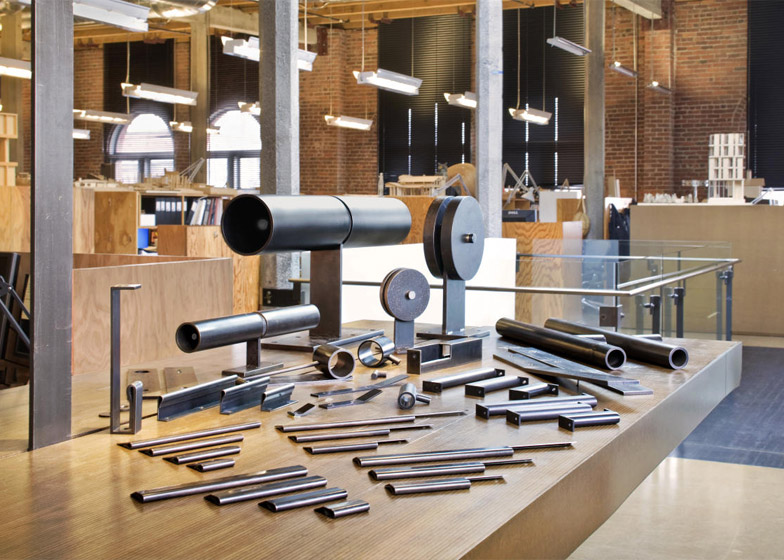Seattle architect Tom Kundig has designed a collection of over 100 hardware items including drawer pulls, door handles, fire pokers and shovels. He spoke to Dezeen about his "modifiable, morphable" and growing product range (+ transcript + slideshow).
The Tom Kundig Collection of steel accessories was launched in 2012 and new products have been added each year.
"We're coming at it as architects who are actually using the products," said Kundig. "When we add things to our collection, it's usually because of an architectural project."
"It was a way to give us a few more choices in the product world."
Kundig, 60, is co-founder of Olson Kundig Architects, a practice known for producing rugged, raw buildings, often in remote locations.
For example, the concrete and glass Pierre house sits between giant boulders, while the oxidised-steel Delta Shelter rests on stilts above a floodplain in Washington State.
Kundig described a weekend cabin in a national park as "virtually indestructible" while his collectors' lounge at last year's Design Miami fair featured stacks of enormous timber beams.
His firm's projects also regularly feature ingenious hardware systems, like windows that are opened with hand cranks, rural cabins mounted on wheels and a gallery with a facade that is lifted by gears and pulleys.
The range of architectural products, produced by Seattle foundry 12th Avenue Iron, comes out of necessity rather than a desire to indulge in industrial design, Kundig said.
"Frankly, we're not necessarily product designers," he said. "We probably don't approach it like a product designer would."
"We look at our products line as a parts store, where you go in and take different pieces and parts from different drawers and assemble them. It's sort of like Frankenstein."
Related stories: see more from Olson Kundig Architects
Olson Kundig Architects was founded in 1967 and now has 130 employees. When asked about his favourite project, Kundig said it's impossible to pick one.
"My favourite project is my career," he said. "It would be really hard to say what's the pinnacle of anything. The pinnacle is the journey itself."
"That's what I love about the accessory line: it's another journey, it's another path that leads to places that are unpredictable."
Read an edited version of the transcript from our interview with Tom Kundig:
Jenna McKnight: You launched your hardware line several years ago, in collaboration with 12th Avenue Iron, a local fabricator. How did that come about?
Tom Kundig: They came to us with the idea. We had been thinking about it for a while, and they had been thinking about it for a while. They were the first to approach us to do an accessory line.
Initially, it was a way to give us a few more choices in the product world. It's been terrific. When we add things to our collection, it's usually because of an architectural project. The production line additions are responses to what comes up while we're working.
Frankly, we're not necessarily product designers. We probably don't approach it like a product designer would. We're coming at it as architects who are actually using the products.
Jenna McKnight: Is there a common thread that runs through your product collection?
Tom Kundig: When we started designing products, the intention was simple: to create modifiable, morphable products. So, you can use a piece as a door handle and maybe it will later morph into a light. Repurposing is the best way to describe how the line is intentionally flexible. Pieces are meant to be used in different ways.
Jenna McKnight: Is it easier to design products than buildings?
Tom Kundig: No, it's different. In some ways it's harder and in some ways it's easier. It's a small object, so you have to do mockups at a very micro level, and anything done at micro level is under higher scrutiny in a way. Just because it's smaller doesn't make it easier. It's just a different way of designing.
Jenna McKnight: How much time does it take to develop a new product?
Tom Kundig: Actually, it takes a little while to do R&D on some of these pieces, to make sure they are going to work. We look at our products line as a parts store, where you go in and take different pieces and parts from different drawers and assemble them. It's sort of like Frankenstein.
Jenna McKnight: What new products are you working on now?
Tom Kundig: We've got a couple ideas. A sconce is something we've been thinking about for a while. Also, we're always using wheels in different ways. Sometimes that comes from clients — they want to use a wheel as a fireplace screen, for instance. And there's doors, of course. And table legs, we've been thinking about those a bit.
Jenna McKnight: Has the hardware line been successful?
Tom Kundig: Successful – that's actually an interesting question. Success is always so hard to define. It's basically making some profit. Now how do you define profit? I don't want to get too complex, but our startup research and development for products isn't tracked separately from our architecture firm, so it's difficult for us to say how profitable the line is.
It's been a tremendous success in that we've been able to use the products. The stuff is being bought. It's being shipped to Australia, to Asia, to Latin America. We get requests from other architects who are using the hardware, which is pretty cool.
Jenna McKnight: While I'm sure the product line is keeping you busy, what about your architecture? What projects are you working on right now?
Tom Kundig: There are so many. I work on relatively small projects, and in order to keep the portfolio going, you have to work on a lot of projects. We have work in Sydney, Rio de Janeiro, Geneva, Seoul, the Austrian Alps – those are our farthest-reaching projects. And of course we did the pavilion for Design Miami at Art Basel.
We have quite a bit of work in New York, and that's a really terrific place for me to work. We also have work in California – in Los Angeles and Napa - and Vancouver, British Columbia. It's kind of crazy in a way, but it's also wonderful.
Jenna McKnight: What type of projects are these?
Tom Kundig: Some are mid-rise, multifamily, mixed-used projects. We have a couple of hotels. Wineries right now are full speed – we have one in Canada and one in Seattle. We have a number of residences, of course. Some retail stores. And museums: a natural history museum in Seattle and a museum addition in Jackson Hole, Wyoming. It's hard to keep track of all this.
Jenna McKnight: As you might know, Dezeen just opened an office in New York, which is where I'm based. Can you tell me about your projects underway here?
Tom Kundig: I have a couple of residential projects finishing up in Manhattan. I'm doing an interior remodel of a warehouse in Long Island City. I'm doing a Williamsburg penthouse.
Jenna McKnight: Your firm is based in Seattle, and a lot of your work has been in natural areas in the Pacific Northwest. When you take on a commission in a dense urban environment, like New York City, how do you make the transition?
Tom Kundig: Really pretty easily. Architecture responds to its context. Obviously I love the rural landscape, but I also love the urban landscape. If I'm working in Manhattan, I approach the design process in the same way: I look around, I experience the place, I try to understand its cultural typography.
Jenna McKnight: Do you think New York sort of hogs the design spotlight? America is a large country, after all.
Tom Kundig: I don't know if hogging is the right word. New York has a culture of design, and because of that, people are attracted to the city. That feeds the history of New York being a design centre.
I think it's good to have a design centre like New York, London, Milan or Los Angeles – they are meccas in a way. That said, the design world spans the globe, from Yakutat, Alaska, to the subcontinent of India. And the digital world spreads the word.
Jenna McKnight: Are you a digital guy?
Tom Kundig: Absolutely not. I'm a luddite when it comes to anything beyond an iPad and a phone. I'm not skilled at the digital interface. But I recognise its importance, and it's very exciting to watch the changes happening. Certainly our office is engaged. They love working in that world.
Jenna McKnight: Do you have a 3D printer?
Tom Kundig: The office does, but I have to ask somebody how to use it.
Jenna McKnight: What's the design and architectural landscape like in the United States right now? Is it a good time to be an architect?
Tom Kundig: I think it's an exciting time, an evolving time. Certainly there is a lot of building going on. I don't know if there's going to be good work. The proof is in the pudding. It takes years to evaluate what was built.
Jenna McKnight: Who would you say is your greatest role model?
Tom Kundig: You know, there are a number of architects whom I have always been inspired by. I just think they're important for me, they resonate with me: Glen Murcutt; Steven Holl, who is a friend; Peter Zumthor. There are so many. A lot of my friends are just terrific architects. They're working at a high level of commitment and delivery.
Jenna McKnight: What is one of your guiding beliefs?
Tom Kundig: I believe architecture is evolutionary, not revolutionary. It's rooted in the present and it anticipates the future.
Jenna McKnight: I know this might be a hard question to answer, but what's your favourite project in your portfolio?
Tom Kundig: It's impossible to pick. My favourite project is my career. It would be really hard to say what's the pinnacle of anything. The pinnacle is the journey itself. That's what I love about the accessory line: it's another journey, it's another path that leads to places that are unpredictable. That's terribly exciting.
Jenna McKnight: What type of designers do you hire?
Tom Kundig: We're looking for all-around designers. In our world, that means being adept at technical design; we've always hired people who can evolve a design into the technical realm. Also, people who can work on all scales, from a big structure to an accessory. The potential to do anything that comes along – I think that's the most important thing. I would just be bored stiff if I wasn't able to have possibilities.
Jenna McKnight: I think I know the answer to this, but: what excites you about the future?
Tom Kundig: The unknown, the excitement of new territories and new ideas and new clients and new places. It really is a fantastic world we live in because it's so unpredictable.

